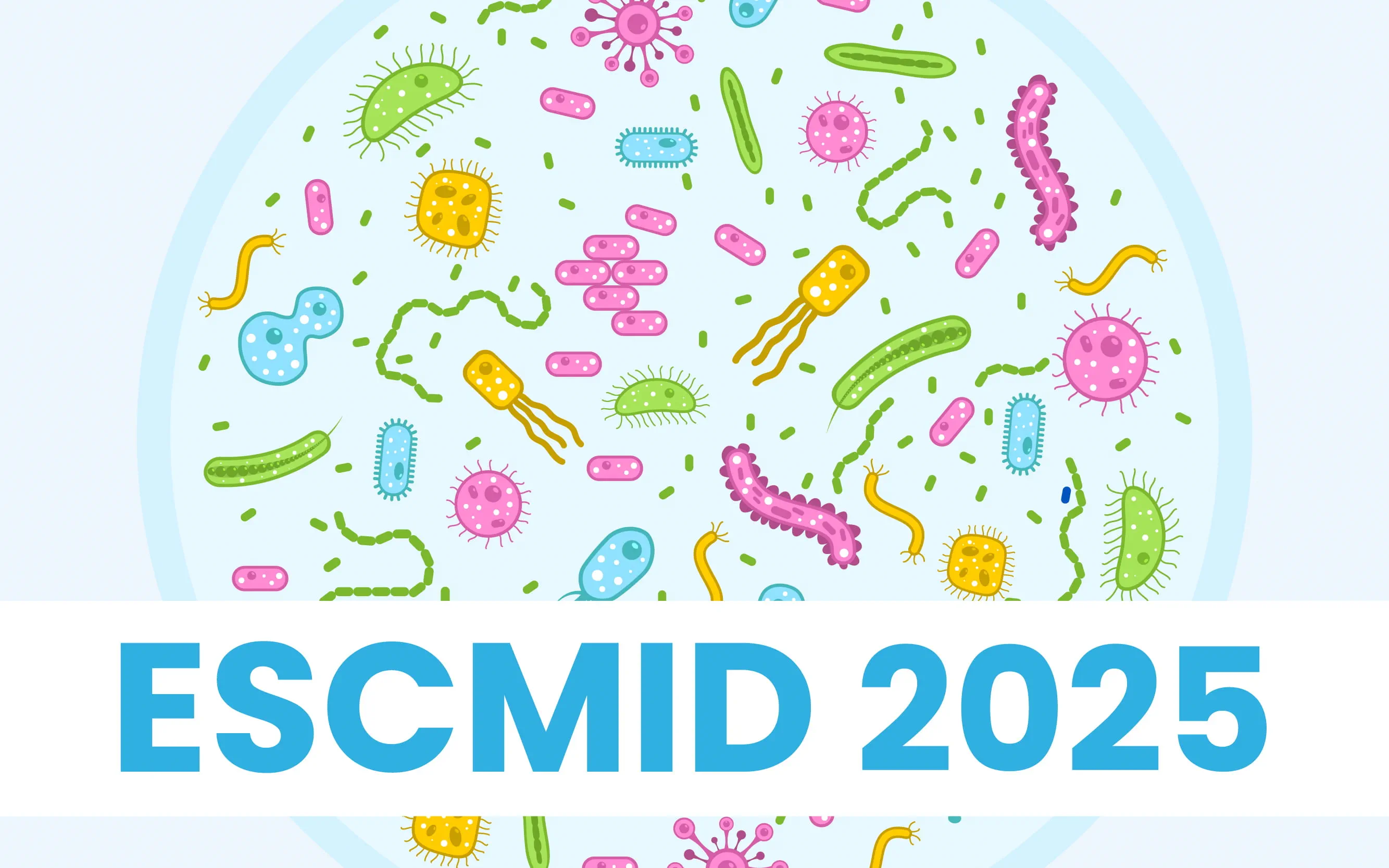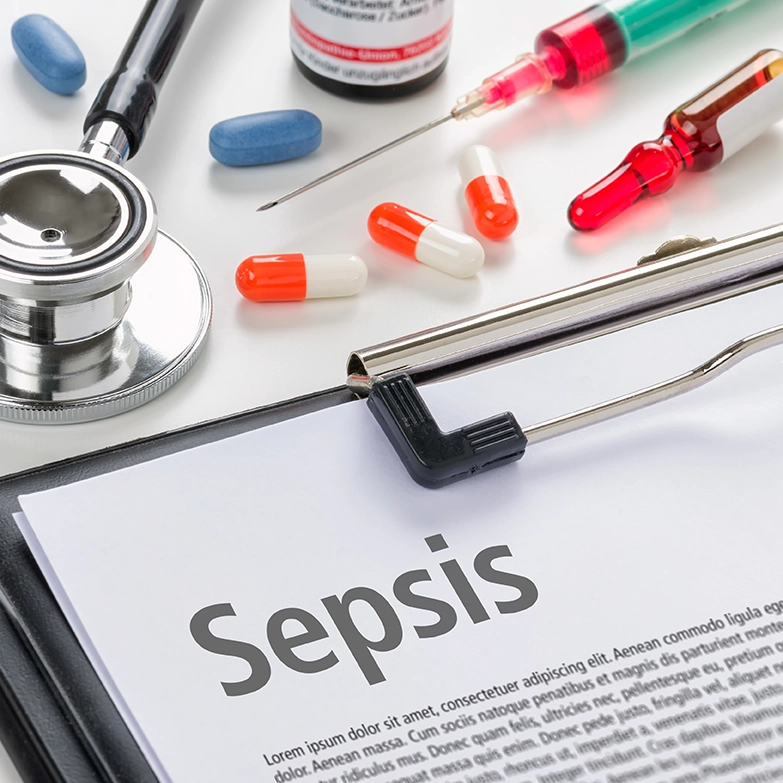ESCMID 2024: The Role of the Microbiology Lab in IPC
The session focused on the vital role of microbiology labs in infection prevention and control (IPC). Integrated stewardship was highlighted as a comprehensive approach encompassing three key elements: Infection Prevention, Diagnostic Stewardship and Antimicrobial stewardship. The complexity of patient cases underscores the need for interdisciplinary collaboration at the intersection of these areas. Microbiology labs significantly contribute to stewardship through activities like providing data for initial empiric therapy and targeted therapy, as well as supporting personalized and monitored treatment based on specific investigations. Local resistance patterns and antibiograms derived from microbiology data are crucial for guiding empiric decision-making, considering infection likelihood, patient comorbidities, and epidemiology. Risk-stratified antibiotic policies based on local resistance patterns and patient-specific factors, including immune status, prior admissions, and comorbidities (such as diabetes, CKD, and COPD), are imperative for tailoring therapy to the patient's condition and infection type (community-acquired or hospital-acquired). In the hospital discussed, the microbiology team processes cultures daily, analyzing them against multiple risk stratifications to categorize patients effectively (e.g., type 1, type 2, type 3). Strategically, the microbiology lab processes cultures daily, employing nine stratifications to classify patient types, improving empiric data compliance from 40%-73%.
The session also discussed the impact of various factors on bloodstream infections and pneumonia in hospitalized patients from different community types. It is observed that Salmonella is the predominant bloodstream infection in type one community-acquired cases, while Streptococcus pneumoniae is prevalent in ICU patients with community-acquired pneumonia. The likelihood of carbapenem resistance is significantly higher in type three patients compared to type one patients. Moreover, advancements in microbiology labs, particularly rapid testing, are highlighted as crucial for diagnostic stewardship. However, there is a concern about underutilizing diagnostic spending, particularly in developing countries, which leads to the overuse of antibiotics. The urgent need for point-of-care diagnostics is emphasized to address these challenges. The role of the microbiology lab in IPC is crucial and multifaceted. Collaboration with infectious disease (ID) physicians and active antimicrobial stewardship (AMS) participation is essential. The lab ensures ideal sampling, rejects inappropriate samples, recommends correct diagnostics, and advises alternatives. It provides accurate results, facilitates communication with clinicians, and aims for shorter turnaround times. Advancements in diagnostic techniques, such as rapid diagnostic tests (RDTs) and molecular identification, have significantly reduced the time to treatment initiation (TTI), leading to improved patient outcomes. Techniques like MALDI/TOF and molecular assays have drastically reduced processing times, with some assays providing results in minutes. In developing countries, affordable lateral flow assays offer rapid detection of pathogens, aiding in early isolation and intervention. Molecular identification techniques, though expensive, provide real-time results and aid in preventing transmission, particularly for gastrointestinal and respiratory illnesses. Clear algorithms and guidelines are essential for targeting appropriate pathogens and guiding therapy decisions.
It was emphasized that the detection of various genes associated with pathogens, such as Extended-spectrum beta-lactamases (ESBLs), carbapenemases, and those related to tuberculosis, is crucial. However, it was noted that not all drug-resistant gene targets can be covered by a single assay. Phenotypic testing is necessary to confirm results, as the absence of a gene does not necessarily indicate the absence of resistance. Additionally, attention was drawn to the global trend of plasmid-mediated spread of carbapenemases, leading to the rapid dissemination of resistant pathogens like Carbapenem-resistant Enterobacterales (CRE). Examples were cited, such as New Delhi metallo-β-lactamase (NDM) from India and OXA-48 from Turkey, highlighting the worldwide movement of these pathogens. In the hospital, monthly data is disseminated to monitor multidrug-resistant organisms (MDROs) over three years, with a focus on CREs, ESBLs, methicillin-resistant Staphylococcus aureus (MRSA), and Vancomycin-Resistant Enterococci (VREs). Despite concerning trends in carbapenem resistance, the hospital has successfully implemented strict protocols to mitigate it. It was noted that guidelines issued by IDSA annually may not be applicable locally, as they primarily focus on KPC-based carbapenemases, which differ from those prevalent in the hospital setting.
In India, where transferable resistance is a significant concern in MDR DNB, E. coli with the PBP3, Klebsiella pneumoniae with NDM and OXA-48, and Pseudomonas aeruginosa are identified. Additionally, Acinetobacter baumannii with NDMs are present, compromising the latest durlobactam's effectiveness. Detecting NDMs is deemed crucial for targeted therapy. Clinicians are guided through treatment options based on pathogen and mechanism of resistance. Despite polymixins lacking efficacy and CLSI 1 EUCAST having no susceptibility breakpoints, they are sometimes necessary due to limited alternatives. Moreover, in the Indian context, NDMs with PBP3 in E. coli may reduce the efficacy of newer antimicrobials. The transition from phenotypic to genotypic surveillance is observed globally. Whole genome sequencing has begun and is utilized for various purposes, such as antimicrobial resistance (AMR) and cluster identification. It has been noted that Acinetobacter transmission occurred from bed 62 to 63. However, the affordability of this technology in India is questioned, as highlighted in a recent article in The Lancet. Despite its potential, routine implementation of whole genome sequencing in low- and middle-income countries (LMICs) faces significant challenges. The absence of demonstrated cost-effectiveness and the need for further analysis and interpretation of data persist as issues. The proposition of a hub and spoke model for rapid communication regarding MDROs and isolation initiation is discussed. The utilization of WhatsApp technology for communication among healthcare personnel has proven effective, particularly in alerting for MDROs. Screening for MDROs upon admission, a common practice in the West is also considered, although MRSA rates are comparatively low in the region. The session discussed a publication on faecal carriage of Carbapenemase-Producing Enterobacteriaceae (CPE) in healthy Indians, which was published a couple of years ago. It was noted that the CPE carriage rate among immune-compromised patients can be as high as 18%, making screening challenging. Therefore, a decision was made not to screen for CPE. Various transmission precautions at the hospital were highlighted, including innovative measures such as changing curtains to indicate strict contact isolation for specific infections like MRSA, CRO, VRE, and Candida auris. The speaker emphasized IPC is crucial for MDROs, even when they are considered colonizers and not actively treated. In 1994, surgeons who had trained abroad introduced laparoscopic surgery in Mumbai. The session focused on outbreaks and their management, with particular emphasis on a case study published subsequently. The study reported on 33 patients, half of whom developed port site infections, with the infection-causing agents identified as AFB. The infections were linked to mycobacterial growth observed at port sites, trocar cannulae, and within glutaraldehyde-soaked trays. Water sources were initially excluded as a contamination source but were later identified. Mycobacteria, specifically M. chelonae/M. fortuitum was found to have high MIC levels associated with glutaraldehyde. Infection control policies were implemented in the OT, including meticulously cleaning hand instruments with proteolytic enzyme detergents and water jets in CSSD. High-level disinfection was completely halted, with only sterilization permitted for surgeries, including laparoscopic procedures, either through autoclaving or ETO gas use.The management of Non-Tuberculous Mycobacteria (NTM) in TB-endemic countries faces several challenges. Firstly, Rapidly Growing Mycobacteria (RGM) 's role in nosocomial infections is poorly understood. Surgeons often misattribute infections to TB due to its prevalence in countries like India, leading to misdiagnosis and inappropriate treatment. This results in patients being unnecessarily put on TB treatment, which does not address their condition. Secondly, effective infection prevention practices are crucial but often overlooked. Microbiologists play a key role in facilitating good practices by interpreting results, minimizing unnecessary testing, and overseeing hospital renovations or constructions to ensure infection control measures are implemented. Additionally, surveillance of healthcare-associated infections, including device-associated infections (DAI), surgical site infections (SSI), and needlestick injuries (NSI), is essential for feedback and improvement. Establishing standardized surveillance definitions and sharing data across healthcare facilities enables collaborative learning and improvement in IPC. This collaborative effort extends to a national level, with thousands of district hospitals participating in IPC surveillance networks, fostering shared learning and improvement nationwide.
During the session, implementing a Quality Improvement Program (QIP) to address CLABSI was discussed. It was mentioned that CLABSI rates were typically kept below 5%, but during the COVID-19 pandemic, rates rose sharply to 15%. Assistance from the CDC and the AIDS Trauma Center was sought to establish the QIP. The program included root cause analysis, the "five whys" method, and fishbone analysis to identify issues such as improper technique among employees working in COVID wards. Corrective and preventive actions were implemented based on these analyses, involving all staff members, including housekeeping. As a result, CLABSI rates were reduced to zero. The importance of microbiologists within the IPC committee was emphasized, with their role defined as daily privilege interlocutors providing updated knowledge on infection prevention and management. It was highlighted that digital communication and face-to-face interactions are utilized as needed, with 24/7 availability for rapid diagnostic tests, along with regular meetings, training, and updates being essential components of the IPC program.
The query about the WhatsApp group was raised to inquire about who follows up on patients carrying AOB bacteria resistant to carbapenems and if there is monitoring for EPC carriers in the hospital. Due to its significance in many hospitals, it was asked whether this monitoring continues when patients return to the hospital. The use of computer assistance for this purpose was mentioned, but it was unclear if they had such assistance available. The response indicated they use a WhatsApp group where reports are immediately shared when the BCID Panel for blood cultures detects positivity, involving infection control nurses, ID physicians, and housekeeping staff. Measures are swiftly taken, reducing response time by at least 24 hours. Specific measures, like strict contact isolation and screening, are implemented for patients who carry certain pathogens until they test negative.
The importance of IPC in decision-making at the highest levels of hospital management was emphasized during the session. Ways to further promote IPC involvement in management were discussed. It was suggested that visibility and support from top leadership could be encouraged, such as through events like an infection prevention week. Additionally, involvement in external organizations related to healthcare, like CAHO, helps leaders better understand and advocate for IPC initiatives. The impact of leadership engagement was highlighted, as it can lead to tangible improvements in areas such as antimicrobial stewardship, demonstrating the crucial role leadership plays in advancing infection prevention efforts. The fishbone action plan was implemented, involving housekeeping staff who highlighted time constraints and patient demands. Staffing was improved, leading to improved compliance. During COVID, infection control challenges surged, but staffing enhancements and assertive demands for compliance mitigated issues. The dissemination of the plan took 15 days, resulting in a significant reduction in CLABSI rates from 15% to zero, a considerable achievement amid the pandemic.
European Society of Clinical Microbiology and Infectious Diseases (ESCMID) 2024, 27th April–30th April 2024, Barcelona, Spain




